The Wonderful World of Female Betta Fish
These colorful and captivating female betta fish have become a popular choice for aquarium owners and enthusiasts alike. With their vibrant hues and unique personalities, female bettas have become a must-have addition to any aquarium hobbyist’s collection.
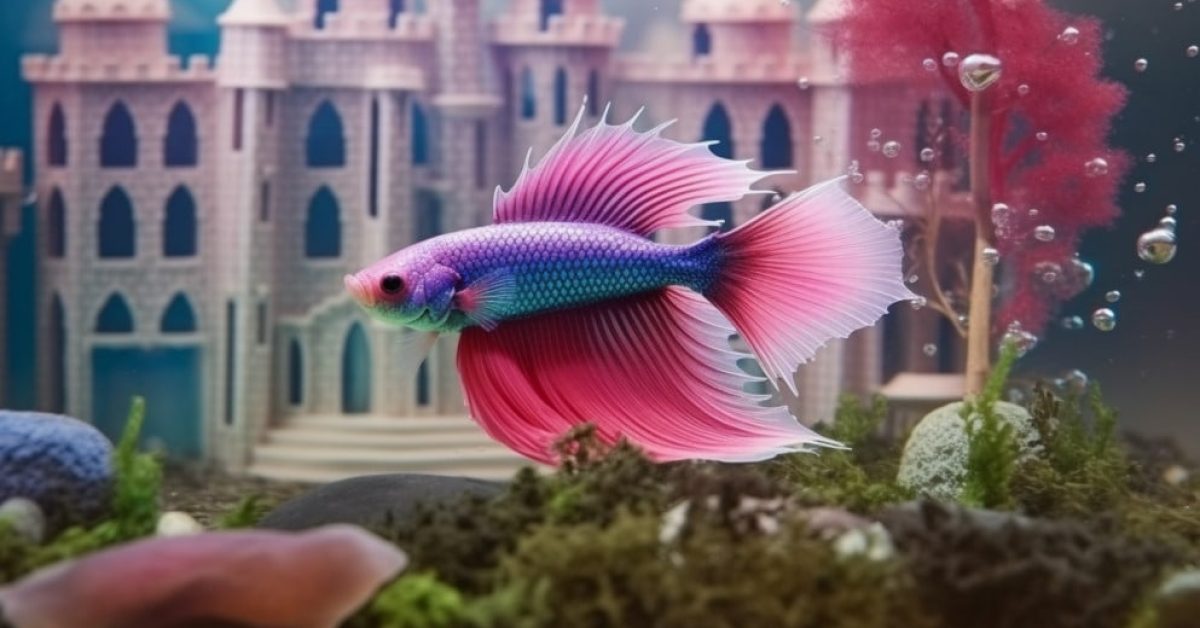
If you’re considering adding some female bettas to your tank, you’ve come to the right place. In this article, we’ll explore everything you need to know about caring for these beautiful fish and how they can enhance your aquarium hobby.
So, let’s dive in
Table of Contents 🦑
The Beauty of The Female Siamese Fighting Fish.
Betta fish also known as Siamese fighting fish are native to the shallow, slow-moving waters of Southeast Asia, including Thailand, Cambodia, and Vietnam.
In their natural habitat, they can be found in rice paddies, streams, and swamps. Females are known for their peaceful nature and tend to be less aggressive than their male counterparts.
They are social creatures and live in groups called “sororities” in the wild. Females also love to hide among plants and other objects, so providing plenty of hiding places in their aquarium can make them feel more comfortable and help to reduce their stress levels.
Understanding the natural habitat and behaviors of female bettas is essential to creating a suitable environment for them in captivity.
10 Most Popular Female Betta Fish Types
There are many different species and types of betta fish available for aquarium enthusiasts. Female bettas can be found in a variety of colors and patterns, from solid colors like blue and red to bi-color and even tri-color combinations.
Some of the most popular types of bettas include the Veil Tail, Crown Tail, Half-Moon, and Double Tail. Each type has its unique characteristics, such as tail shape and fin length, making them a popular choice among aquarium owners.
It’s essential to research the specific needs of each type of female betta to ensure they thrive in their environment. With proper care and attention, bettas can live for several years and bring beauty and personality to any aquarium.
Here are the 10 most popular and stunning betta fish breeds that many aquarium enthusiasts admire for their colors and patterns:
- Koi Betta Fish.
- Halfmoon Betta Fish.
- CrownTail Betta Fish.
- Double Tail Betta Fish.
- Plakat Betta Fish.
- Dragon Scale Betta Fish.
- VeilTail Betta Fish.
- Super Delta Betta Fish.
- Elephant Ear Betta Fish.
- Rose Petal Betta Fish.
Betta Gender Bender
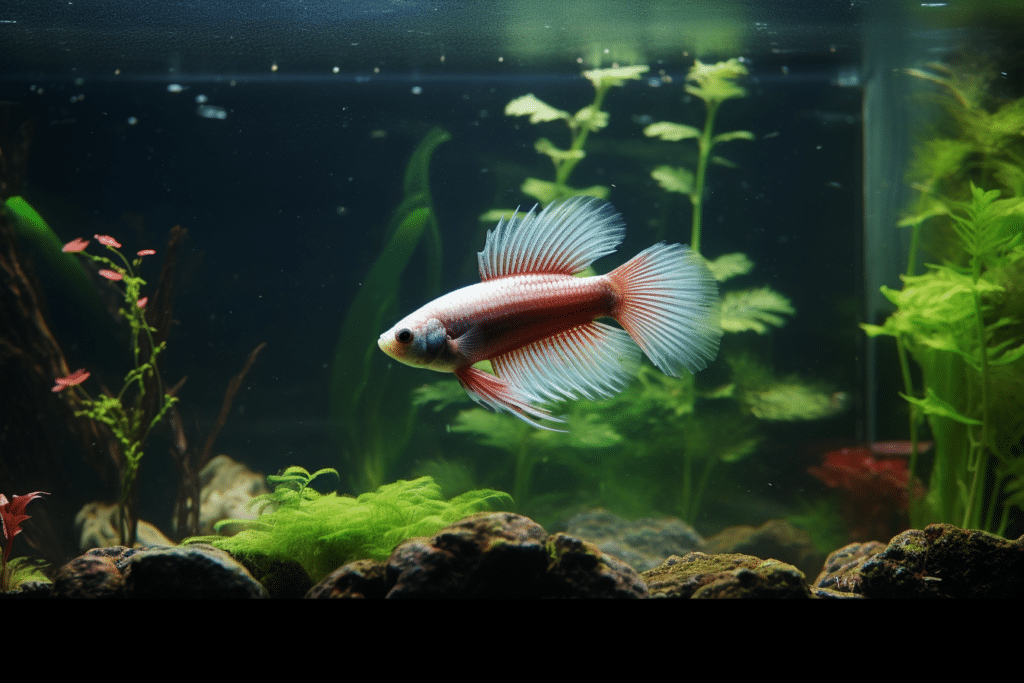
When it comes to betta fish, the differences between males and females are as clear as day and night! While both male and female bettas have their unique charm and beauty, there are some striking differences between the two.
Male bettas are known for their long and flowing fins, with bright and bold colors that shimmer in the light. They are often called “Siamese fighting fish” due to their aggressive nature and tendency to flare their fins when threatened.
On the other hand, female bettas are more subdued in their appearance, with shorter fins and more muted colors. But don’t let their plain looks fool you, female bettas can be just as feisty as their male counterparts.
When kept in groups, female bettas can form their pecking order and establish their hierarchy in the aquarium. While males should always be kept in separate tanks to avoid aggression.
| Characteristic | Female Betta | Male Betta |
|---|---|---|
| Size | Usually smaller, around 2-3 inches in length. | Usually larger, around 3-4 inches in length. |
| Fin Shape | Rounded fins with shorter ventral fins. | Elongated fins with longer ventral fins. |
| Body Shape | Rounded and plumper body. | Sleeker and a more streamlined body. |
| Coloration | Less intense and more muted colors. | Bright and vivid colors with intricate patterns. |
| Aggression | Generally less aggressive and territorial. | More aggressive and territorial, and may need to be housed alone. |
| Compatibility | Can be kept in groups of 3-5 females, but must be introduced slowly. | Generally should be kept alone or with non-aggressive fish. |
It’s important to note that while these differences are generally true for female and male betta fish, individual fish can vary in their appearance and behavior.
Also, provide proper care and environment for both male and female bettas to ensure their health and well-being.
How does Betta Fish Mate?
Female betta fish, like other fish, can become pregnant. However, note that female bettas don’t become pregnant in the way that mammals do. Instead, they simply carry the eggs in their bodies until they are ready to be fertilized by the male.
A female can be identified by their egg spot, a small white dot located on their underbelly.
Bettas are breeding through a process called spawning, which typically occurs in the wild during the rainy season. During this time, male fish build a bubble nest on the surface of the water using bubbles and saliva. The female will then visit the nest and lay eggs, which the male will fertilize and place into the nest.
After spawning, the male betta will aggressively guard the nest and eggs, and remove any unfertilized eggs or dead baby bettas.
It’s important to keep in mind that breeding betta fish can be a complicated process, and even the ladies bettas can be aggressive toward each other and towards the males.
Breeding should only be attempted by experienced aquarists who have separate tanks for male and female fish.
Can Male And Female Betta Fish Live Together In The Same Tank?
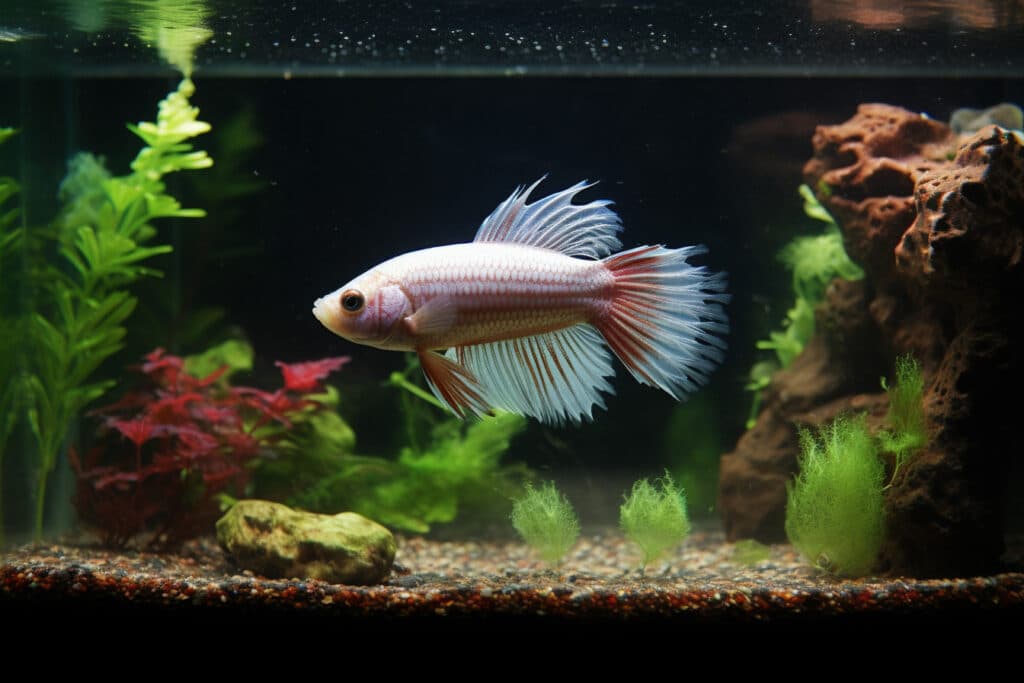
Many people wonder if male and female betta fish can live together in the same tank.
The short answer is NO! While male betta fish are generally known to be aggressive and territorial, some females can also display aggression towards each other.
If you are considering adding both male and female bettas to the same tank, it’s important to understand the potential risks.
Males are more likely to attack other male bettas, and they might also harm or even kill females.
If you do decide to keep male and female bettas together, make sure you have a large enough tank at least 40 or 50 Gallons tank and plenty of hiding places to reduce aggression. If you notice any signs of aggression, such as torn fins or injuries, it’s important to separate the fish immediately to prevent further harm.
Ultimately, it’s safer to keep male and female bettas in separate tanks to ensure their well-being.
Betta Sorority Tank
Betta sorority tanks are a great way to house multiple females together in a peaceful and harmonious environment.
Unlike male bettas, females can coexist together without showing aggression towards one another, making them the perfect candidates for betta sororities.
Do Female Betta Fish Fight?
It’s important to remember that not all females will get along with each other bettas, and it’s crucial to have a proper tank size and the right number of bettas in the tank.
To keep a Betta sorority tank, it is important to have a tank size of at least 20 gallons, it should a long tank and a minimum of 4-5 females. Ideally, it would be even better to have females that are somehow related (sisters maybe) and not strangers to each other.
Please keep in mind that the pecking order among the females can change anytime, which can lead to aggression and even the death of some fish. Therefore, it is best to avoid creating a sorority tank as a beginner aquarist.
By following these guidelines and providing a bigger tank, your betta sorority can thrive and coexist peacefully.
Other Tank Mates
If you thinking of adding some tank mates to your female betta fish tank, there are several options to consider. One popular choice is the peaceful and unobtrusive ghost shrimp.
These small crustaceans are an excellent choice and can help keep your tank clean by eating fish food leftovers and debris. They also generally keep to themselves and won’t encroach on your female’s personal space.
When considering other fish as tank mates for your female bettas, it’s important to choose species that are compatible with their behavior and habitat needs.
Peaceful and community-minded fish like tetras and guppies can be a good choice, as long as they don’t have long, flowing fins that could be mistaken for another betta. Other bottom-dwelling fish like cory catfish can also make good companions for females. However, it’s important to always monitor the tank and be prepared to separate any fish that show signs of aggression or stress and place them in their tank.
Overall, with proper research and careful selection, you can create a healthy and harmonious community tank for your females and their tank mates.
Female Betta Fish Snacks And Diet
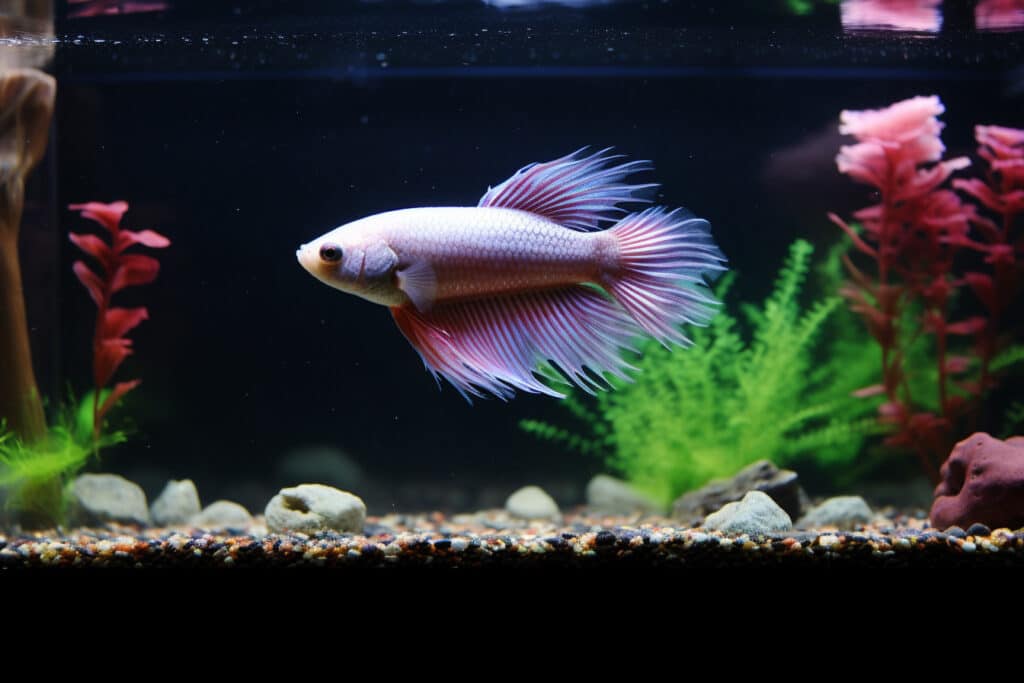
Feeding your female betta fish a well-balanced diet is crucial to maintaining their overall health and happiness. Fortunately, there are many high-quality food options available on the market.
Freeze-dried and frozen foods such as brine shrimp and bloodworms are popular choices among aquarium owners and are readily available at most pet stores. It’s important to vary their diet to prevent them from becoming bored with their meals.
In addition, it’s essential to feed them the appropriate amount of food, which is typically once or twice a day. Overfeeding can lead to health problems such as constipation and obesity.
You should also avoid leaving food leftovers in the tank, as this can cause the water quality to deteriorate. It’s recommended to feed your female betta fish a variety of pellets, flakes, and frozen food to ensure they receive a well-rounded diet.
When feeding your fish, observe their behavior and adjust their diet accordingly. If they are not eating, it may indicate a health problem or they may not be interested in the current food. In this case, try changing their diet or the type of food you’re using to feed them.
By providing a healthy and varied diet, you can ensure your female betta fish stay happy and healthy for years to come.
Live Plants
Live plants can be a great addition to a female betta sororities tank as they not only provide aesthetic value but also offer a natural environment for the fish to thrive. Plants like Java moss, Anubias, and Java fern are great choices for aquarium decorations that female bettas will enjoy.
These plants not only enhance the visual appeal of the tank but also create hiding places for the fish to retreat to when they need privacy or a break from swimming. Additionally, plants help to maintain a healthy tank by removing excess nitrates and providing oxygen for the fish.
it’s important to remember that plants require maintenance just like any other aquarium decoration. Ensure that they are receiving enough light and nutrients, and trim any excess growth to keep them from overcrowding the tank.
Tank Maintenance
Maintaining a healthy tank is essential for the well-being of your female betta fish.
Good filtration is necessary to remove unfinished meals, waste, or debris from the water. A filter is an important component of your aquarium and should be chosen based on the size of your tank. Regular cleaning and water changes are also necessary to keep your tank clean and free of harmful substances.
Overfeeding your fish can lead to excess food in the tank, which can create an unhealthy environment for your bettas. It’s important to feed them the appropriate amount of food and remove any uneaten waste promptly.
Adding a water conditioner can also help to neutralize harmful chemicals and ensure that the water in your tank is safe for your fish.
By regularly maintaining your tank, you can ensure that your female betta fish are healthy and happy.
In conclusion
Female bettas are beautiful and energetic fish that can bring joy to any home.
Understanding their natural habitat and behaviors is essential in creating a suitable environment for them in captivity. A well-balanced diet should be provided to ensure they receive all the nutrients they need.
Additionally, plants can help to create a natural environment for them and maintain tank water quality.
Finally, regular tank maintenance is key in ensuring the health of your female betta fish.
With proper care and attention, these fish can live long, healthy lives in an aquarium setting.
Thank you for taking the time to read about the mystery behind the female betta fish. We hope this information has been helpful and has deepened your understanding of these fascinating creatures.
It is important to continue to educate ourselves about the care and well-being of our pets, and I appreciate your interest in this topic.
Thank you again for your support and interest in the world of betta fish.

Delighted to have you here at BettaReef! This place is a treasure trove of knowledge about Betta fish, Betta Care, Health, Gear, and much more from the wonders of aquatic life. My journey in this fascinating world began when I was just 8, and now, as a seasoned hobbyist, I’m here to help fellow Betta enthusiasts create a thriving Betta environment for a healthy life.
I’m committed to delivering high-quality content, backed by a stringent editorial process. Each product review is based on real-life usage and practical analysis, ensuring that you get insights and advice that truly matter.
Related Blog Posts:
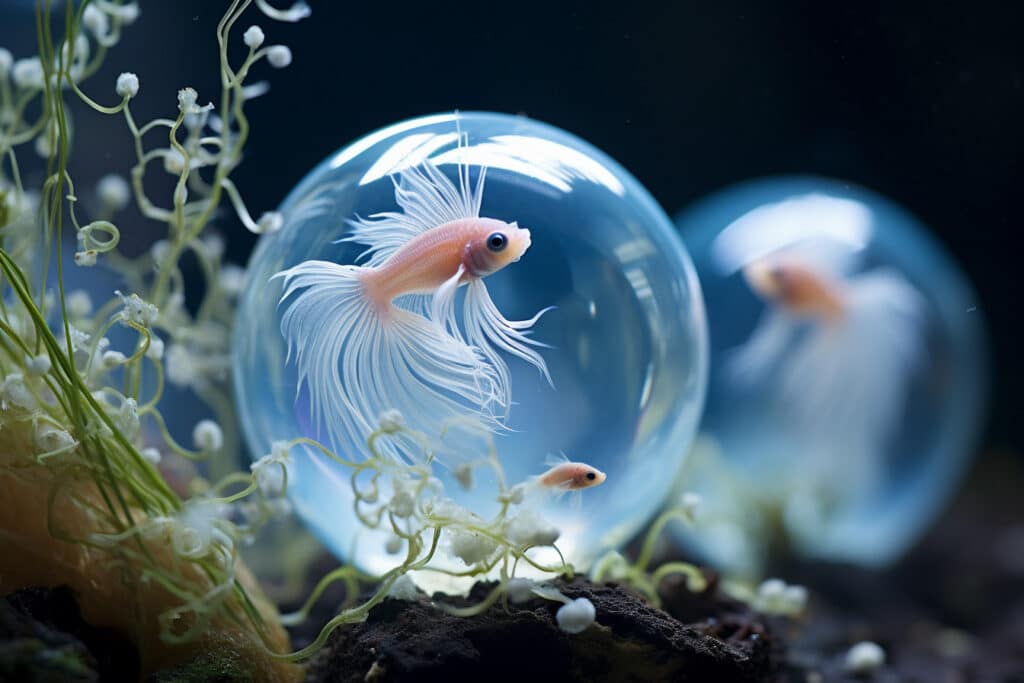
Betta Fish Eggs The Miracle of Birth
Betta Fish Eggs The Miracle of Birth Welcome to our blog post about Betta Fish
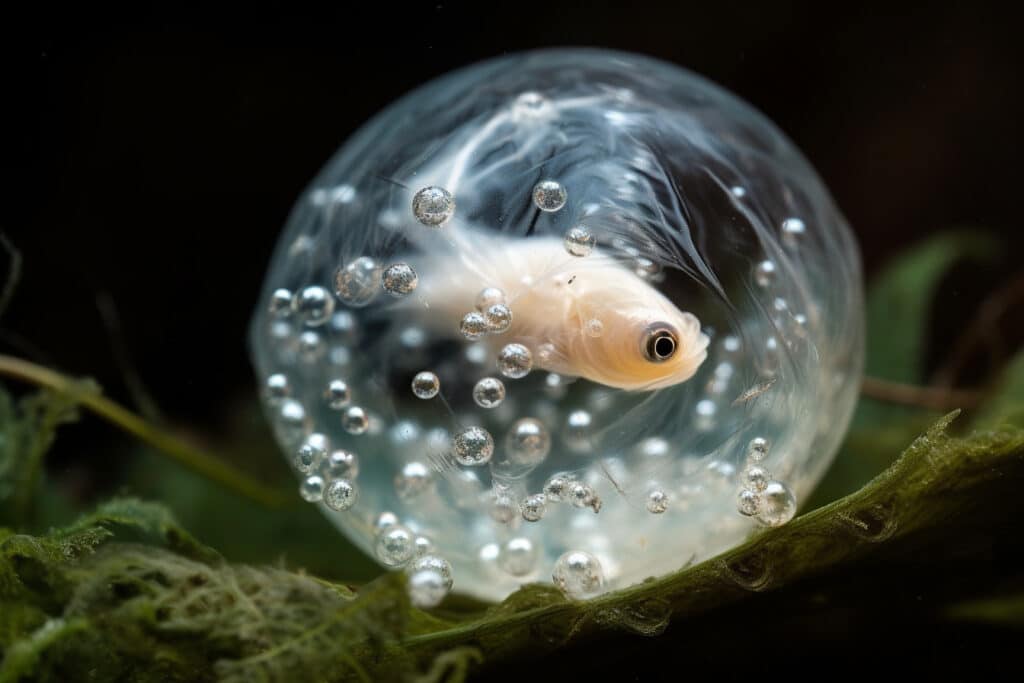
Inside The Betta Bubble Nest World
Swim To 🤿 Home Inside The Betta Bubble Nest World The world of the Betta
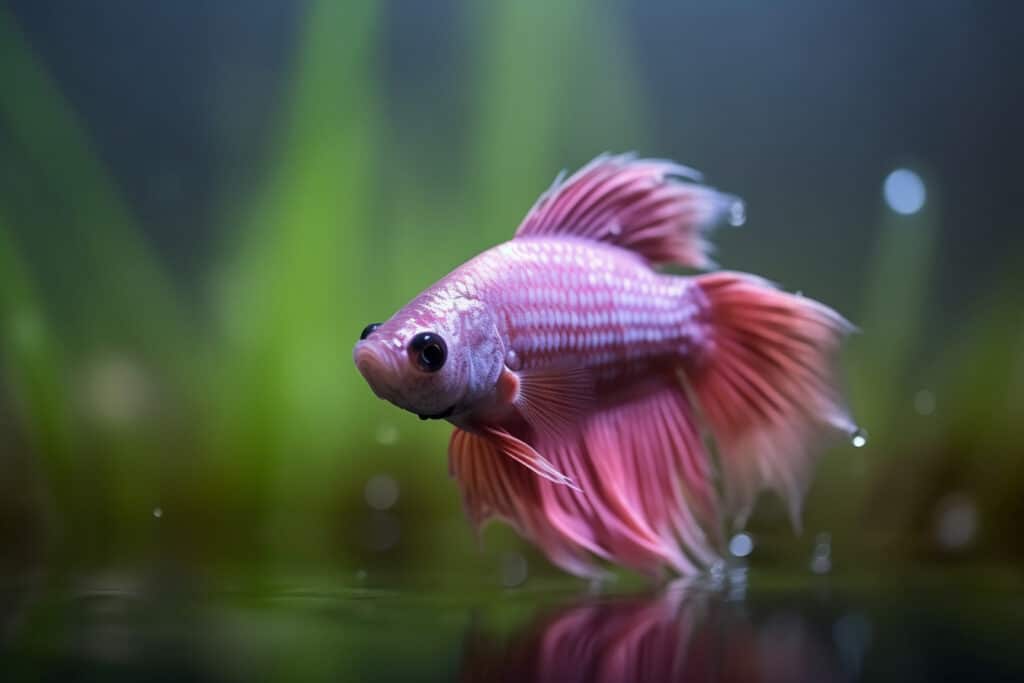
The Beauty of Pink Betta Fish
The Beauty of Pink Betta Fish Get ready to fall in love with the most
